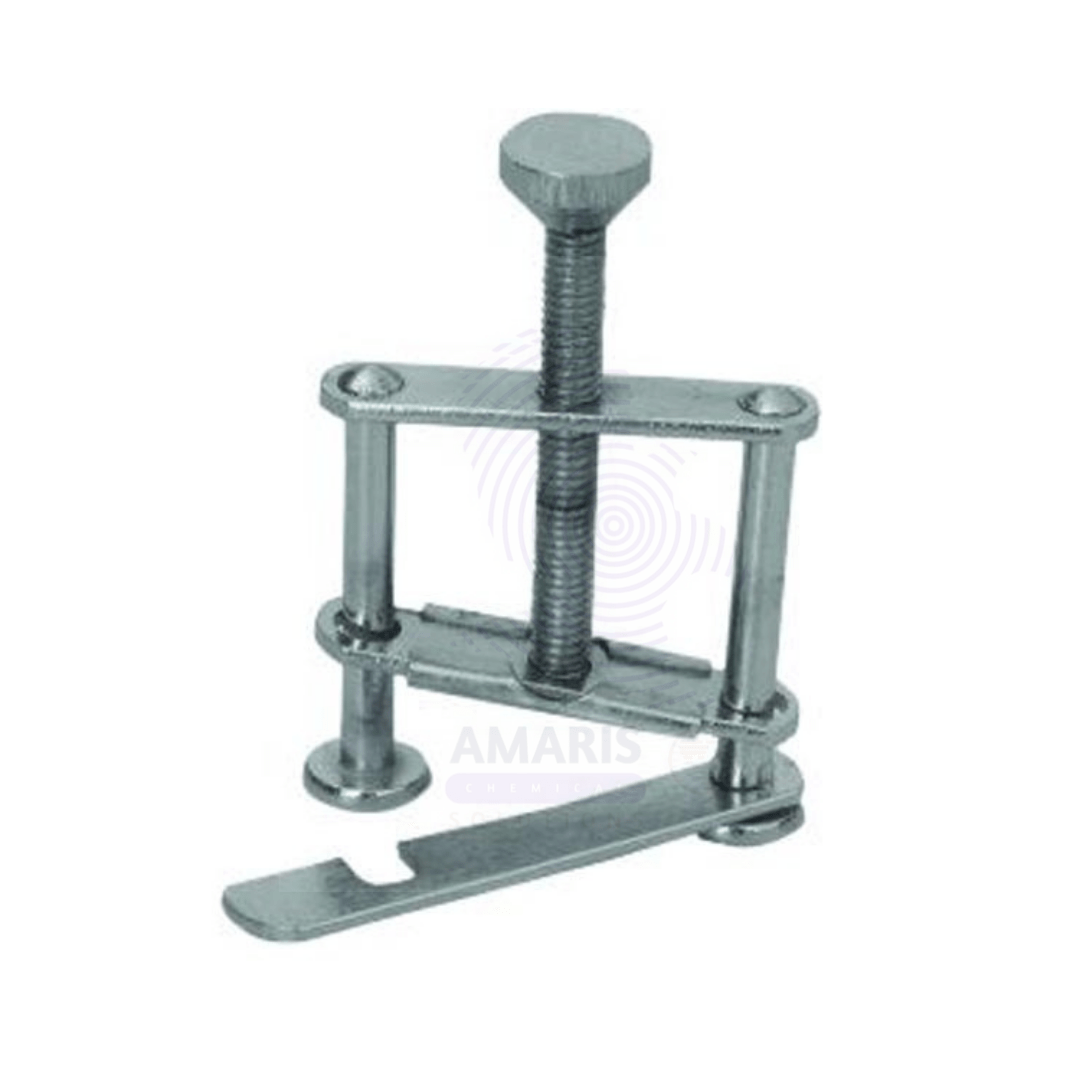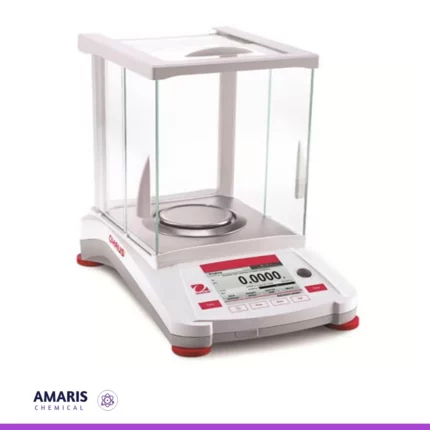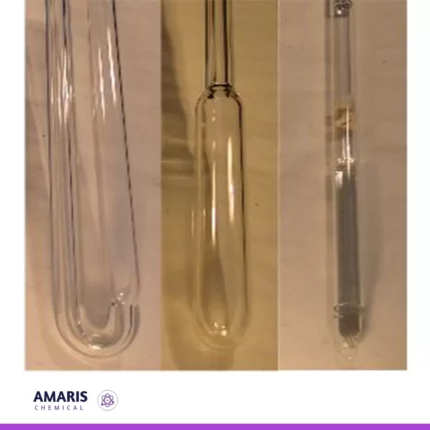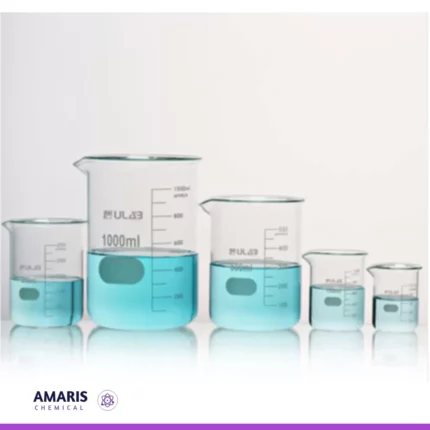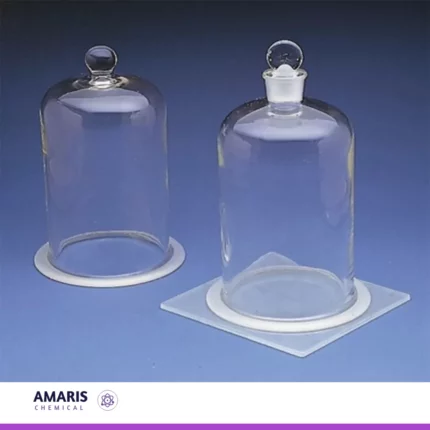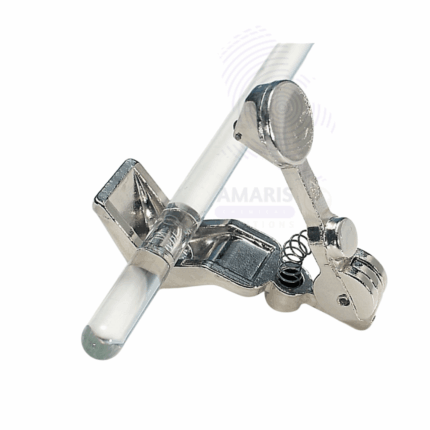
Glass tubing cutter file
$1,500.00 Original price was: $1,500.00.$1,400.00Current price is: $1,400.00.
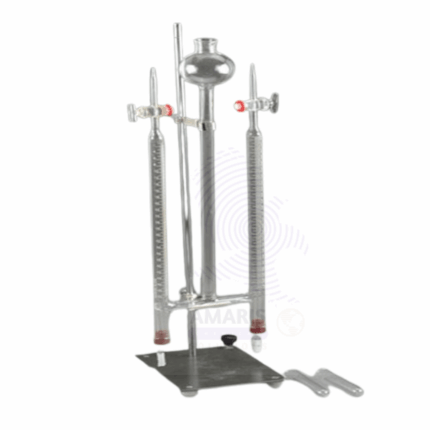
Hoffman Voltameter
$500.00 Original price was: $500.00.$450.00Current price is: $450.00.
Hoffman Clips
$200.00 Original price was: $200.00.$180.00Current price is: $180.00.
Whatsapp Order
Hoffman clips, also known as towel clamps or surgical clips, are commonly used in surgical procedures to secure towels, drapes, or other sterile materials to the patient’s skin or to clamp off blood vessels or tissue. They are typically made of stainless steel and have a spring-loaded design that allows them to firmly grip onto objects without slipping. Hoffman clips come in various sizes and shapes, with serrated jaws to provide a secure hold. They are an essential tool in maintaining a sterile surgical field and preventing contamination during procedures.
SKU:
ACS87323CHEM0
Category: LABORATORY EQUIPMENT & APPARATUS
Description
Uses of Hoffman clips
- Securing Drapes and Towels: One of the primary uses of Hoffman clips is to secure sterile drapes and towels to the patient’s skin. This helps maintain a sterile field by preventing contamination from non-sterile surfaces.
- Clamping Blood Vessels: In certain surgeries, particularly those involving vascular procedures, Hoffman clips may be used to temporarily clamp blood vessels to control bleeding. This allows surgeons to work in a relatively bloodless field, making the procedure safer and more manageable.
- Tissue Dissection: Hoffman clips can be used to temporarily secure tissue during dissection. By holding tissue out of the way, surgeons can have better visibility and access to the surgical site.
- Organ Retraction: During some surgeries, Hoffman clips may be used to retract organs or tissues to provide better access to the area being operated on. They can hold tissue in place without causing damage or compromising the surgical field.
- Closure of Wounds: In certain situations, particularly in small animal surgeries, Hoffman clips may be used to close wounds instead of sutures. This technique is often employed in situations where rapid closure is necessary and where sutures may not be feasible.
- Sterilization: Ensure that Hoffman clips are properly sterilized before use to prevent introducing infections or contaminants into the surgical site. Follow established protocols for sterilization, such as autoclaving or chemical sterilization, and verify that the clips are sterile before opening them.
- Proper Placement: Ensure that Hoffman clips are placed accurately and securely. Improper placement can lead to inadequate hemostasis (control of bleeding) or tissue damage. Verify the correct positioning of the clips and double-check their placement before proceeding with the surgery.
- Appropriate Size: Use Hoffman clips of the appropriate size for the intended purpose. Using clips that are too small may result in inadequate clamping or slipping, while using clips that are too large may cause unnecessary tissue trauma or difficulty in maneuvering.
- Avoid Over-tightening: Avoid over-tightening Hoffman clips, especially when clamping blood vessels or delicate tissues. Over-tightening can cause tissue ischemia (reduced blood flow) or tissue necrosis (death of tissue). Use gentle pressure to achieve hemostasis without causing excessive tissue damage.
- Monitor Tissue Perfusion: Continuously monitor tissue perfusion (blood flow) beyond the area where Hoffman clips are applied. Assess tissue color, temperature, and capillary refill to ensure adequate perfusion. If signs of compromised perfusion are observed, promptly release or adjust the clips as needed.
- Proper Removal: Remove Hoffman clips carefully and gently at the appropriate time during the procedure or postoperatively. Improper removal can cause tissue trauma or bleeding. Use appropriate techniques to release the clips without causing unnecessary tension on the tissues.
- Documentation: Document the use of Hoffman clips in the patient’s medical records, including the number, location, and duration of application. This helps ensure continuity of care and facilitates communication among healthcare providers.
Related products
Barlows wheel apparatus
$0.01
The Barlow's wheel apparatus is an experimental device used to demonstrate the conversion of electrical energy into mechanical energy through electromagnetic principles. It consists of a horizontal wheel or disk with radial metal spokes attached to its center. The wheel is mounted on an axle, allowing it to rotate freely.
Barometer tubes
$0.01
A barometer tube is a slender, sealed, and typically transparent tube used in barometers to measure atmospheric pressure. It is usually filled with a liquid, often mercury, but sometimes water or another fluid, which rises or falls within the tube in response to changes in atmospheric pressure. The height of the liquid column in the tube serves as an indicator of the current atmospheric pressure, with higher pressure causing the liquid to fall and lower pressure causing it to rise. This measurement helps in predicting weather changes and understanding atmospheric conditions.
beaker hysil
$0.01
A glass beaker is a cylindrical, open-top container made of glass, typically with graduated volume markings on its side. It is commonly used in laboratories for holding, mixing, and heating liquids, as well as for performing various experiments and chemical reactions. Glass beakers come in various sizes and are designed to provide easy observation of the contents and to withstand temperature changes without significant deformation or chemical interaction with the substances being used.
Bell Jar with knob
$0.01
The best definition of a bell jar apparatus is a scientific instrument used in laboratories to create a controlled environment for various experimental purposes, such as studying the behavior of gases, conducting vacuum experiments, or demonstrating principles of physics and chemistry. It consists of a glass or transparent plastic container shaped like a bell, which can be sealed to create a vacuum chamber. The apparatus allows researchers to manipulate and observe the interactions of substances or objects within the vacuum or controlled atmosphere, often enabling investigations that wouldn't be possible under standard atmospheric conditions.
Blotting paper
$0.01
Blotting paper is a highly absorbent and thin sheet of paper, typically made from materials like cotton, linen, or other plant fibers. It is designed to quickly absorb excess liquids, such as ink, oil, or moisture, from various surfaces without smudging or smearing the substances. Blotting paper is commonly used to remove excess ink from a freshly written page, absorb oil from the skin without disturbing makeup, or dry wet items. It is often found in office settings, art studios, and cosmetic applications due to its efficient absorption properties.
blow pipes
$0.01
A blowpipe apparatus is a scientific instrument used in analytical chemistry and mineralogy for conducting various tests, particularly flame tests and microchemical reactions. It typically consists of a small tube or pipette through which a controlled stream of air or oxygen is blown onto a sample being heated. This stream of air or oxygen enhances the combustion of the sample, allowing the observation of characteristic colors emitted by different elements when they are vaporized and excited by the heat. The blowpipe apparatus is often used to identify and differentiate between different elements and compounds based on their unique emission spectra and reactions.


 Emollients
Emollients Humectants
Humectants UV Filters
UV Filters Surfactants (cosmetic)
Surfactants (cosmetic) Preservatives (cosmetic)
Preservatives (cosmetic) Fragrances and Essential Oils
Fragrances and Essential Oils Antioxidants (cosmetics)
Antioxidants (cosmetics)
 Solvents (lab)
Solvents (lab) Chromatography Chemicals
Chromatography Chemicals Microbiology and Cell Culture Reagents
Microbiology and Cell Culture Reagents Biochemical Reagents
Biochemical Reagents Inorganic and Organic Standards
Inorganic and Organic Standards Spectroscopy Reagents
Spectroscopy Reagents Molecular Biology Reagents
Molecular Biology Reagents
 Precious Metal Extraction Agents
Precious Metal Extraction Agents
 Plasticizers
Plasticizers Polymerization Initiators
Polymerization Initiators Stabilizers
Stabilizers Monomers
Monomers Fillers and Reinforcements
Fillers and Reinforcements Antioxidants (plastics)
Antioxidants (plastics) Colorants (plastic pigments,Dyes)
Colorants (plastic pigments,Dyes)
 Fertilizers
Fertilizers Plant Growth Regulators
Plant Growth Regulators Soil Conditioners
Soil Conditioners Animal Feed Additives
Animal Feed Additives Biostimulants
Biostimulants
 Dough Conditioners
Dough Conditioners Flour Treatments
Flour Treatments Fat Replacers
Fat Replacers Preservatives (baking)
Preservatives (baking)
 Surfactants (cleaning)
Surfactants (cleaning) Builders
Builders Bleaching Agents
Bleaching Agents Enzymes
Enzymes Solvents (cleaning)
Solvents (cleaning) Fragrances
Fragrances Disinfectant
Disinfectant Metal cleaning
Metal cleaning
 Binders/Resins
Binders/Resins Pigments
Pigments Solvents (paint)
Solvents (paint) Additives
Additives Driers
Driers Anti-Corrosion Agents
Anti-Corrosion Agents Specialty Coatings
Specialty Coatings Functional Coatings
Functional Coatings Application-Specific Coatings
Application-Specific Coatings
 Sealants and Adhesives
Sealants and Adhesives
 Biodegradable Surfactants
Biodegradable Surfactants Bio-based Solvents
Bio-based Solvents Renewable Polymers
Renewable Polymers Carbon Capture Chemicals
Carbon Capture Chemicals Wastewater Treatment Chemicals
Wastewater Treatment Chemicals
 Preservatives (food)
Preservatives (food) Flavor Enhancers
Flavor Enhancers Acidulants
Acidulants Sweeteners
Sweeteners Emulsifiers
Emulsifiers Antioxidants (food)
Antioxidants (food) Colorants (food)
Colorants (food) Nutrient Supplements
Nutrient Supplements Nutraceutical Ingredients
Nutraceutical Ingredients
 Fresh Herbs
Fresh Herbs Whole Spices
Whole Spices Ground Spices
Ground Spices Spice Blends
Spice Blends
 Surfactants(oil)
Surfactants(oil)
 Antibiotics
Antibiotics Active Pharmaceutical Ingredients
Active Pharmaceutical Ingredients Excipients
Excipients Vaccine Adjuvants
Vaccine Adjuvants Nutraceutical Ingredients
Nutraceutical Ingredients Solvents (pharmaceutical)
Solvents (pharmaceutical)
 Automotive chemicals
Automotive chemicals Pyrotechnic Chemicals
Pyrotechnic Chemicals


 Vulcanizing Agents
Vulcanizing Agents Accelerators & Retarders
Accelerators & Retarders Antidegradants
Antidegradants Reinforcing Agents
Reinforcing Agents Plasticizers & Softeners
Plasticizers & Softeners Fillers & Extenders
Fillers & Extenders Blowing Agents
Blowing Agents Adhesion Promoters
Adhesion Promoters
